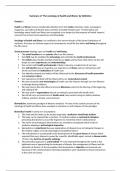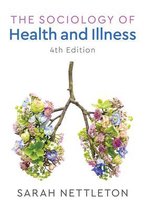Summary
Summary of the Book of Medical Sociology (The Sociology of Health and Illness), 2024
- Course
- Institution
- Book
This is a summary of all mandatory chapters (1 through 9) of Nettleton's book 'The Sociology of Health and Illness' for the course of Medical Sociology. It is written entirely in English.
[Show more]




